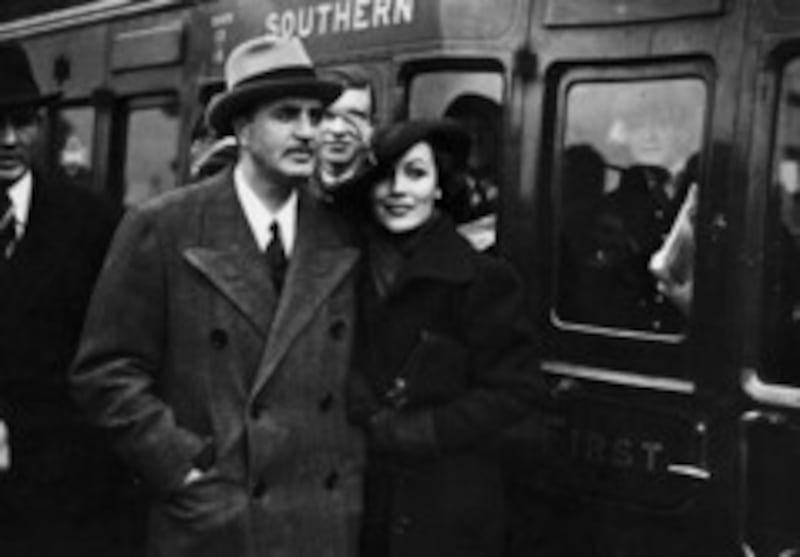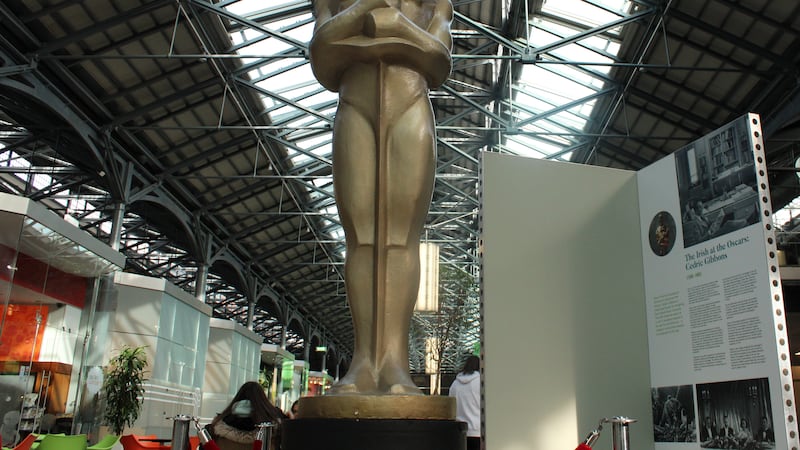WITH Irish filmmakers having picked up a record 14 Academy Awards nominations, it is hoped many will get their hands on the coveted gongs this weekend. But did you know that an Irish American designed the original Oscar statuette?
One of the most lauded set designers in US film history, Cedric Gibbons went on to win 11 Academy Awards of his own for art direction – a category record that remains unsurpassed to this day.
The most successful Oscar winner of Irish descent, Gibbons received his first Oscar for The Bridge of San Luis Rey (1929).
Ahead of the 2023 Academy Awards, a new display at EPIC The Irish Emigration Museum in Dublin casts a look back on his career.
Catherine Healy, EPIC’s historian in residence, describes Gibbons as “a pioneer” in film set design.
Read more:A look at the amazing Irish locations in Oscar-nominated The Banshees Of Inisherin
Born to an Irish father and American mother in New York in 1890, Gibbons served as art director with MGM studio from 1924, until his retirement in 1956.
An astute businessman, it was a stipulation of his contract that his name be listed as art director on every MGM film released in the United States. As a result, he amassed almost 1,500 credits during his tenure.

Although likely to have had a hands-on role upon a fraction of those titles, Gibbons oversaw the development of a strongly distinctive visual identity for the Hollywood studio’s pictures.
“Gibbons led the move away from painted backdrops to the 3D backdrop. He was the first art director to develop his own recognisable set style, with a focus on glossy luxury and art deco interiors,” says Healy.
The Hollywood Golden Age began during the Great Depression in the late 1920s and Gibbons in his designs recognised audiences' need for escapism.
Healy recalls how Gibbons once described the role of art director as “someone who makes everyone’s dreams come true”.
Read more:The Banshees of Inisherin for the best film? No feckin' chance
One such movie was the 1932 film Grand Hotel. Even with the likes of Greta Garbo and Joan Crawford in the cast, Gibbons’ extravagant and luxurious sets outshone the actors.
One of the Oscar’s biggest oversights, Gibbons failed to pick up an art direction award for the movie. Healey points out that he seemed to have been “prouder of those that didn’t win his awards”, including the late 1930s films Marie Antoinette and Romeo and Juliet.
“I recall an interview where he said "I never won an Oscar I deserved or deserved an Oscar I won”,” she adds.
Other films that did win him awards include Pride and Prejudice (1940), An American in Paris (1951), The Bad and the Beautiful (1952) and Somebody Up There Likes Me (1956).
Gibbons’ sole directing credit was Tarzan and His Mate (1934), starring Johnny Weissmuller and Maureen O’Sullivan.
“That film came out just before censorship guidelines had been properly enforced and was pretty risky, with Maureen O'Sullivan's scant clothes disapproved by many groups including the Catholic Legion of Decency,” remarks Healy.
She also reveals that Gibbons’ influence extended beyond the screen.
“The MGM arts department apparently got thousands of letters from members of the public asking for floor plans and photos of the set as they wanted to recreate these designs in their own house.
Gibbons didn't give many interviews, but is quoted in some colourful women's magazines giving advice on how women should dress their homes.”
However, it’s his design of the Oscar statuette which Gibbons is most famous for.
One of 36 founding members of the Academy of Motion Picture Arts and Sciences, his design of a trophy in the form of a sword-carrying knight, remains almost the same today.
Although it was American sculptor George Stanley who was commissioned to make the statuette, Gibbons had final control over the design and the only difference made was moving the film reel to under the knight’s feet, as opposed to having the knight standing in front of the reel.
EPIC are inviting Oscars fans to visit the museums CHQ building until March 14 to view the nine foot tall golden statuette, have their photo taken with it and learn more about the Irish-American Academy Awards legend.

With hopes high for Irish glory from the likes of Colin Farrell and Brendan Gleeson for their roles in The Banshees of Inisherin and the Northern Irish short An Irish Goodbye, all eyes will be on the Dolby Theatre in Los Angeles on March 12, with the ceremony hosted by US comedian Jimmy Kimmel.








